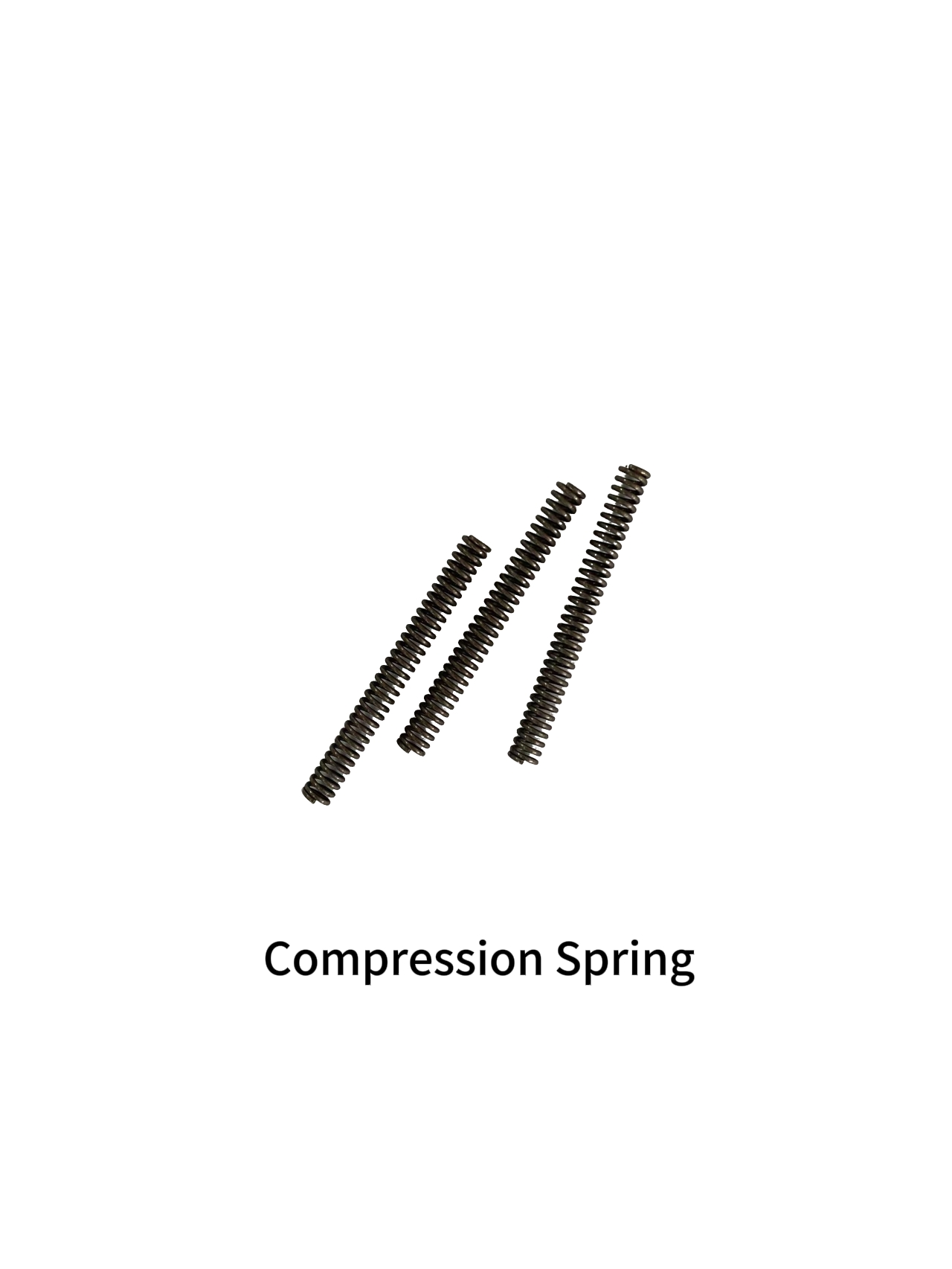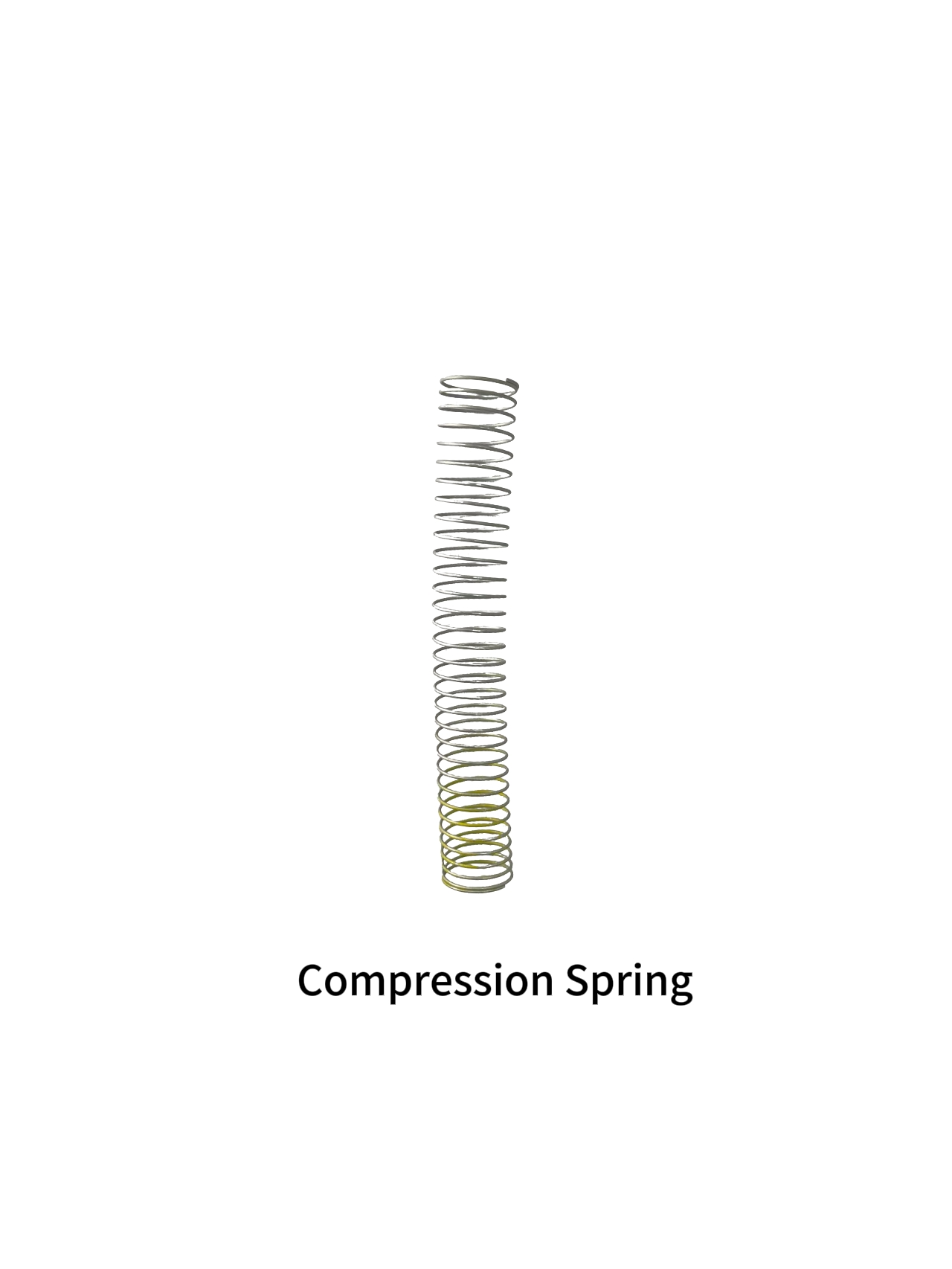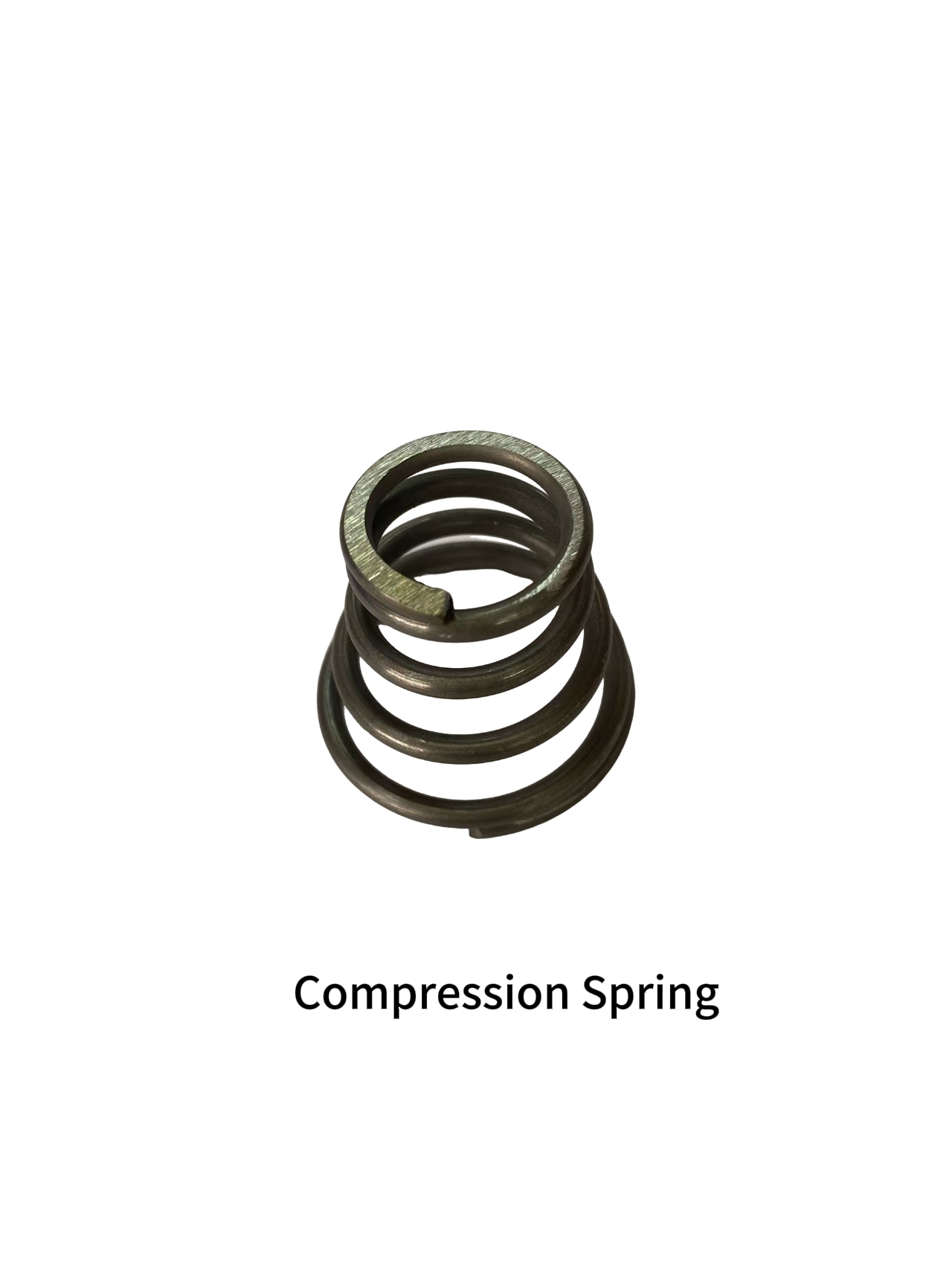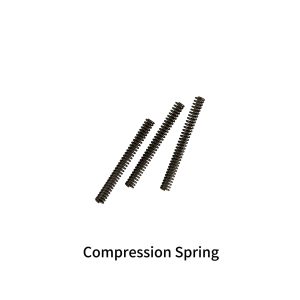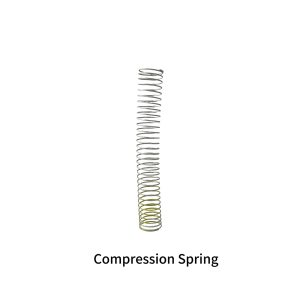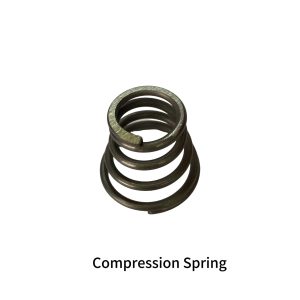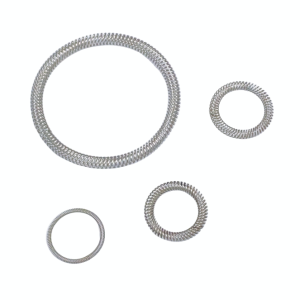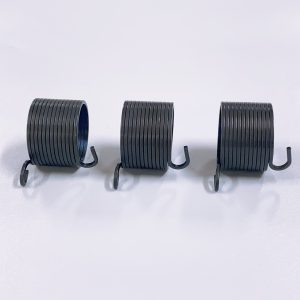Compression Spring
A compression spring is a common type of mechanical spring primarily used to withstand axial pressure, storing energy when compressed and providing rebound force. Below is a detailed introduction to compression springs:
- Basic Structure
- Shape: Typically cylindrical (variants include conical, barrel-shaped, etc.) with uniform pitch.
- End Designs:
- Closed & Ground Ends: Flattened for even force distribution, preventing tilting.
- Open Ends: Unground, more cost-effective but less stable.
- Key Parameters
- Wire Diameter (d): Diameter of the spring wire.
- Outer Diameter (D) / Inner Diameter: Maximum or minimum coil diameter.
- Free Length (H₀): Unloaded spring length.
- Active Coils (n): Number of coils contributing to elastic deformation.
- Spring Rate (k): Force per unit deflection (k = \frac{Gd^4}{8D^3n}k=8D3nGd4, where GG is shear modulus).
- Material Selection
- Carbon Steel: Low-cost, general-purpose (e.g., 65Mn).
- Stainless Steel: Corrosion-resistant (e.g., 304, 316) for humid/chemical environments.
- Alloy Steel: High strength (e.g., 60Si2MnA), fatigue-resistant for heavy loads.
- Special Alloys: Heat-resistant (e.g., Inconel), non-metallic (e.g., polyurethane).
- Manufacturing Process
- Coiling: Formed via spring-winding machines.
- Heat Treatment: Stress relief to enhance elasticity.
- Surface Finishing: Plating (zinc, nickel), powder coating, or oxidation for corrosion resistance.
- End Processing: Grinding or shaping for flat contact surfaces.
- Applications
- Industrial Machinery: Shock absorption (e.g., stamping equipment).
- Automotive: Suspension systems, clutch springs.
- Electronics: Tactile switches, battery contacts.
- Medical Devices: Surgical tools, adjustable supports
- 6.Design Standards
- International: ISO 2162, DIN 2098.
- China: GB/T 1239 (Technical specifications for helical springs).
Shuangyuan produce various compression spring with wire diameter from 0.03-16mm

Compression Spring

Compression Spring 
Compression Spring 
Compression Spring

